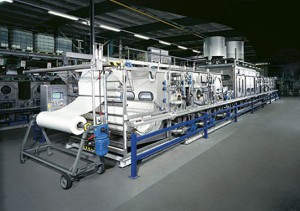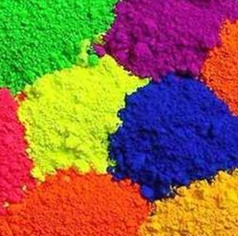Objectives and Classification of Bleaching
Bleaching: Bleaching is a chemical process which removes the natural color of Textile fibers. The fiber/yarns/ fabric become permanent white.
Objective of Bleaching
- It removes the natural color from textile materials.
- It brings the textile materials permanent white.
- Improve the absorbency of the textile materials.
- Produce textile materials for the next process.
- Some fabrics are sold as bleached goods.
A Modern Bleaching Machine
Types of the Bleaching Process
- Generally, there are two types of the bleaching process
- Hand Bleaching
- Machine Bleaching
Hand Bleaching: It is a small scale production process for domestic and cottage industry. Before machine invention, it was practiced until it is in use. It is not a defectless and controlled process.
Machine Bleaching: It is continuous and discontinuous large scale production process. Modern textile industries have used this process. Machine bleaching us controlled and defectless. Production cost is less in the machining process. The bleaching process can be divided into two processes depending on the bleaching agent:
- Bleaching by Oxidizing agents
- Bleaching by Reducing agents
Oxidizing bleaching agents
- Chlorine gas
- Bleaching powder {Ca(OCl)Cl
- Sodium hypo-chloride (Na2OCl)
- Calcium hypo-chloride {Ca(OCl)2}
- Potassium di-chromate (K2Cr2O7)
- Sodium di-chromate (Na2Cr2)
- Potassium permanganate ( KMnO4)
- Potassium Chlorate (KClO3)
- Sodium peroxide (Na2O2)
Reducing bleaching agents
- Hydrogen (H2)
- Carbon (C)
- Carbon mono oxide
- Hydrogen sulfide (H2S)
- Sulphur dioxide(SO2)
- Ferrous sulphate (FeSO4)
- Titenous chloride(TiCl2)
- Zinc dust (Zn)
- Sodium Sulphate (Na2SO4)
The bleaching agents mentioned above all are not used only the bleaching process. Some bleaching agents are very costly. Some agents cannot bleach completely. Reducing bleaching agents only used for protein fibers.
Hydrogen peroxide can bleach all kinds of fibers. So, it is called universal bleaching agents.
Oxidizing bleaching agents
Oxidizing agents generally are used for cellulosic fibers. If reducing agents are used then after bleaching when fabrics come in contact with air they become yellowish or reddish that is come back to the original color. But oxidizing agents bleach goods free from this defect. So, goods become permanent white. Therefore Oxidizing bleaching agents are generally favored.
Reducing bleaching agents
Protein fibers wool and silk generally bleached with reducing bleaching agents. Because chlorine present in oxidizing agents damages proteins fibers without bleaching action. This is why animal fibers are bleached with reducing agents.
Fiber types choice the bleaching process to be used. Generally, need basis bleaching is made may be half bleach or full bleaching.
Factors considered in the bleaching process
- Concentration of chemicals
- Liquor ratio (L: R)
- pH of the chemical solution.
- Time of treatment.
Written by
Engineer Sheikh Nurja
B.Sc engineer of textile
If you like this article please do not forget to share on facebook and put your valuable comments.


